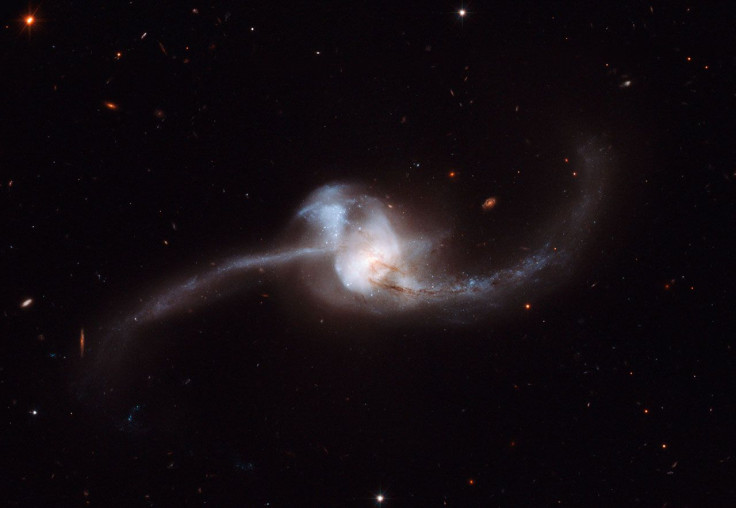Cosmic Collision Caught On Camera: Hubble Eyes A Galactic Merger In Detailed New Image

NGC 7714 is a spiral galaxy, but its shape is not quite what you'd expect from that type of galaxy. Usually, spiral galaxies, like our Milky Way, have distinct arms that branch out from the galactic center. In the case of NGC 7714, its arms have been misshapen due to a galactic merger with NGC 7715 in its past. In a new image of the galaxy captured by the Hubble Space Telescope, you can see the aftermath of the cosmic pileup.
One of the most noticeable features of NGC 7714 is the hazy trail that runs from the center of the galaxy toward NGC 7715, the smaller galaxy that NGC 7714 merged with between 100 million and 200 million years ago. NGC 7714 is located 100 million light-years from Earth. While the galactic merger may have disrupted the structure of the galaxy, NGC 7714 benefits from the exchange of material with its neighbor. The transfer of material fuels star formation and makes the combo a starburst galaxy. Most of the stars in NGC 7714 are Wolf-Rayet stars -- huge stars that quickly lose their mass due to strong stellar winds.
Hubble has observed many galactic mergers. In 2009, the space telescope released an image of NGC 2623 that showed the final stages of such a merger. In the picture, the galactic centers have combined to form one nucleus while the lower left tail has more than 100 star clusters.

Perhaps the most famous galactic merger will occur in a few billion years. The Milky Way and the Andromeda Galaxy are expected to collide in around 4 billion years, but our solar system will remain intact. "The stellar populations of both galaxies are jostled, and the Milky Way loses its flattened pancake shape with most of the stars on nearly circular orbits. The galaxies' cores merge, and the stars settle into randomized orbits to create an elliptical-shaped galaxy," Gurtina Besla, from Columbia University, said of a "worst-case" scenario in a statement.
© Copyright IBTimes 2025. All rights reserved.






















